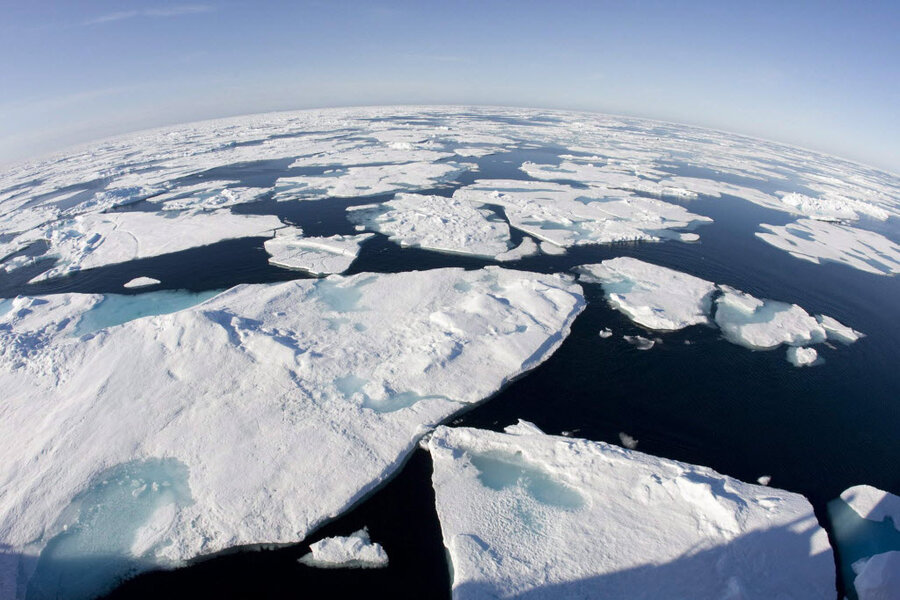As Arctic sees record-warmth, old whaling logs offer new insights
Loading...
The Arctic got another alarming report card, and now the national weather agency of the United States is asking everyday people to pitch in and help their troubled northerly neighbor.
The Arctic Report Card, released Tuesday, noted average air temperatures warmed over Arctic land reaching 2.3 degrees Fahrenheit above average for the year ending in September, the highest recorded since observations began in 1900.
"Warming is happening more than twice as fast in the Arctic than anywhere else in the world. We know this is due to climate change," National Oceanic and Atmospheric Administration (NOAA) chief scientist Rick Spinrad told reporters in San Francisco at a meeting of the American Geophysical Union.
NOAA, which authored and issued the report card, is also heading up a new approach to understanding the Arctic: studying the detailed logbooks of whalers, who sailed due north from New England from the mid-1700s until about 1965. The records, climate scientists believe, may offer clues to the sorts of changes being witnessed today, and provide a longer arc of Arctic weather patterns.
Whaling ships kept meticulous daily logbooks of weather conditions during their often years-long voyages searching the globe for whales, valued for their light-giving oil, said Michael Dyer, senior maritime historian at the New Bedford Whaling Museum, which is supplying much of the data, in an interview with the Associated Press.
The New Bedford Whaling Museum has about 2,600 whaling logbooks dating from 1756 to 1965, but the project, called Old Weather: Whaling, so far includes just about 300 logbooks related to whaling trips to the Arctic from the mid-1800s to the first decade of the 20th century.
Those digitized logbooks are being put online so "citizen-scientists" can join in helping climate scientists sort through the epic amounts of data logged at sea.
An entry from the San Francisco-based whaler Beluga during a two-year voyage to the Bering, Chukchi, and Beaufort seas from 1897 to 1899 is indicative of the sort of information in the logs.
Lat. 61.19. Long. 175.42. Fast to the ice till 6 A.M. then made sail and worked to the N.E. at 8:45 A.M. Commenced steaming. Steamed till 1 P.M. then struck open water. Carrying topsail and fore and aft sails. Steering from N.N.W. to N.E. as the ice allowed. Wind light and variable first part. Latter part strong E.S.E. winds thick and snowing. Ther. 30. Bar. 29.60."
Whalers logged all sorts of information like what it was like on board; if anyone fell overboard or was disciplined for misconduct; and obviously, whale sightings. But for this project, researchers and citizen-scientists are looking at the precise longitude and latitude measurements, weather conditions, the presence of icebergs and the edge of the ice shelf.
"If they're cruising in the Bering Strait and there's ice, there will be a notation in the logbook that ice fields are present," Mr. Dyer said.
Understanding what ice was present in the Arctic 150 years ago is gaining new importance because the ice shelf logged new lows this year. When the sea ice reached its winter peak last February, it was the lowest maximum extent since records began in 1979. The minimum ice coverage, reached in September, was the fourth lowest on record.
By recovering as much historical weather data as possible, the information could help create sophisticated computer models of past climate and help predict future conditions, Kevin Wood, a climate scientist with NOAA's Joint Institute for the Study of the Ocean and Atmosphere at the University of Washington and a lead researcher on the project, told the AP.
He called it a "virtual time-traveling weather satellite.""We can build an enormously detailed reconstruction of the conditions at the time ... and we can we can understand how the climate has been changing over a longer period of time," Dr. Wood said.
This report contains material from the Associated Press.






